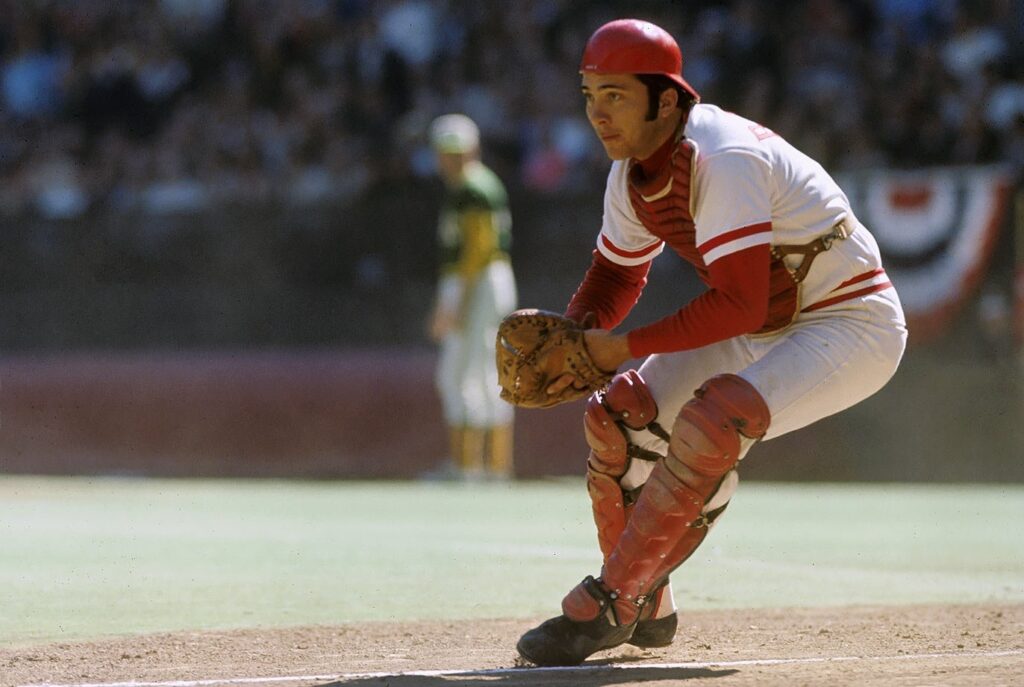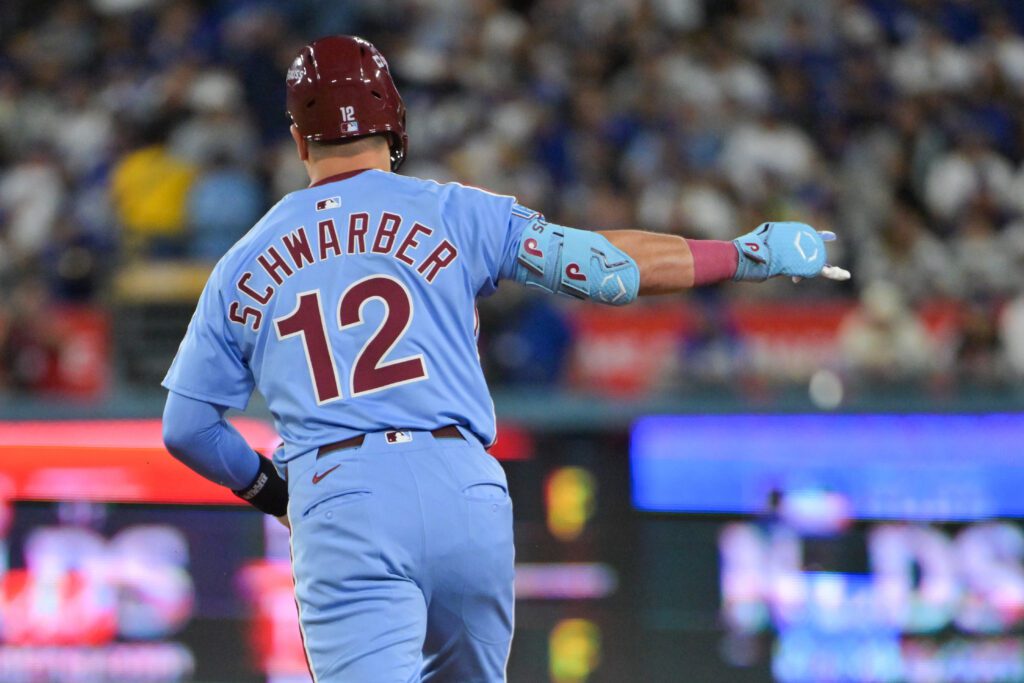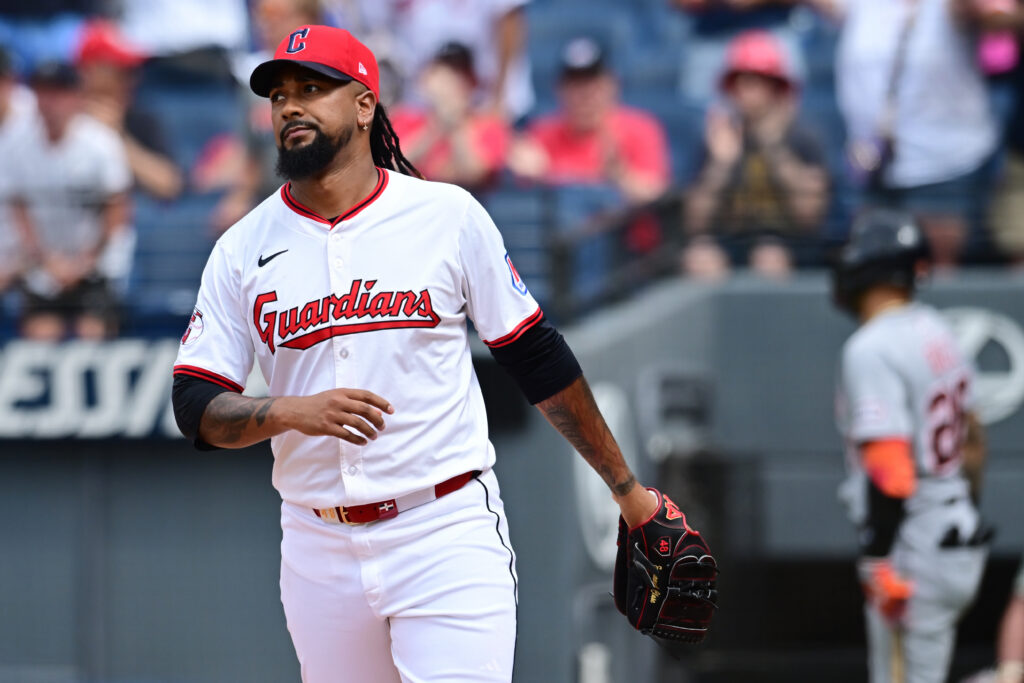This is the first article in a series that looks at the five best players at each position for the Cincinnati Reds. In this installment are catchers and managers.
Many people think the Cincinnati Reds franchise dates back to the Red Stockings of 1869. That was the first team comprised entirely of professional players and they won 91 straight games before being defeated by the Brooklyn Atlantics on June 14, 1870.
However, the Reds did not come from that team, nor did they come from the original Cincinnati Reds National League (which played from 1876-79) and the Cincinnati Stars, which played in 1880 before they, like their predecessors, folded due to lack of funds.
The team we know today actually got its start in the American Association in 1882. The A. A. was started as an alternative to the rules-heavy National League, and the new circuit permitted games on Sundays, the sale of alcohol (especially whiskey) at games, and 25-cent admission (which was half of what the older league charged). The Red Stockings, as they were called for their nine-year tenure in the new league, lost their first game but went 55-25 and won the pennant.
Cincinnati’s success was short-lived. The Red Stockings didn’t win another league championship for 37 years and only finished within 10 games of the top spot twice (1882-83). The team shortened their name to Reds and joined the Brooklyn Bridegrooms (later renamed the Dodgers) in joining the National League after the American Association owners would not oust the league’s inept management after the 1889 season. Like many National League teams, Cincinnati saw its roster depleted by the upstart Players’ League (and its higher promised salaries) in 1890. By the end of the year, though, both leagues had folded, leaving a 12-team National League as the lone “major” league in existence.
The Reds won their first pennant in the new league in 1919, then defeated the White Sox in the World Series, which was marred by the “Black Sox” Scandal in which eight Chicago players agreed to lose on purpose. Cincinnati went back to play for the championship just three times in the next 50 years. The Reds got swept by the Yankees in 1939, beat the Tigers in seven games to win their second title the following season, and fell to New York again in 1961.
However, the Reds thrived in the 1970s, when the team became known as the “Big Red Machine” steamrolled through opponents with All-Stars at practically every position. Cincinnati went to the playoffs six times in the decade, reaching the World Series four times and winning twice. The Reds swept the Athletics in the 1990 World Series but haven’t come close since (they got swept by the Braves in the 1995 National League Championship Series and haven’t gotten past the Division Series in their four playoff appearances since).
Players from every era of Reds baseball will be mentioned in the upcoming articles, although very few will come from the 21st century. A few years down the line, that may not be the case, since the Reds are loaded with young talent that needs some more time to develop. This year’s Cincinnati squad includes young pitchers Hunter Greene (age 23), Andrew Abbott (24), and closer Alexis Diaz (26), as well as hitters Tyler Stephenson (26), Spencer Steer, (25), Jonathan India (26), Matt McLain (23), Elly De La Cruz (21), Christian Encarnacion-Strand (23) and Noelvi Marte (21), who should keep the team competitive for a long time.
The Best Catchers and Managers in Cincinnati Reds History
Catchers
Honorable Mentions – Ah, it took us a few teams, but we finally found a player with this nickname. Henry “Heinie” Peitz spent nine years with the Reds around the turn of the 20th century (1896-1904) and won a fielding title in 1897. His best season was in 1902 when he drove in 60 runs and posted career-highs with 54 runs scored, 122 hits, 22 doubles, and a .315 average. Overall, he hit .279 with 748 hits, 128 doubles, and 354 RBIs in 818 games. Ivey Wingo had a 13-year run with Cincinnati in two stints (1915-26 and 1929), and he was with the club for its first World Series championship in 1919. He led the National League in games played by a catcher twice and set career highs with 106 hits and 11 triples in 1917. Wingo totaled 796 hits, 60 three-baggers, and 347 RBIs in 1,010 games. He went 4-for-7 with a run scored and an RBI in the World Series against the “Black Sox.”
5. Ed Bailey – He was a four-time All-Star during his nine seasons with Cincinnati (1953-61), and he was traded early in the season before the Reds made their World Series appearance. Lonas Edgar Bailey was a solid fielder who had his best year in 1956 when he set career highs with a .300 average, 59 runs scored, 115 hits, 28 home runs, and 75 runs batted in. Overall, he hit .261 with 582 hits, 94 homers, and 316 RBIs in 714 games.
4. Eugene “Bubbles” Hargrave – He was one of the better-hitting catchers, batting over .300 multiple times during his eight-year run with the Reds (1921-28). Hargrave’s best season was 1923 when he hit .333 and set career highs with 54 runs, 126 hits, 23 doubles, 10 home runs, and 78 runs batted in. Three years later, he was involved in a three-way race among Cincinnati players for a batting title that wasn’t decided until more than two months after the season had ended. Teammate and outfielder Rube Bressler hit .357, but he only played 86 games. Hargrave hit .353 and played in 105 games (which was the accepted standard of the time), so he was awarded the crown (Reds rookie outfielder Walter “Cuckoo” Christensen hit .350 to finish third). The league took 30 more years to set the standard to win the batting title to the plate appearance model we have today. In addition, Hargrave won the fielding title in 1927. He ranks fourth in Reds franchise history with a .314 average and added 744 hits, 155 doubles, and 359 RBIs in 766 games.
3. Johnny Edwards – He played seven years with the club (1961-67) and started in the World Series in his first season. Edwards earned three All-Star selections and two gold gloves during his time in Cincinnati, and he posted career highs with 128 hits and 67 RBIs in 1963. He had 585 hits, 53 home runs, and 296 RBIs in 751 games. Edwards went 4-for-11 with two doubles, a run scored and two RBIs in the loss to the Yankees in the 1961 World Series.
2. Ernie Lombardi – Despite being a notoriously slow runner, he reached offensive levels rarely seen by a catcher during his 10 seasons in Cincinnati (1932-41). Lombardi was a five-time All-Star and a solid fielder who became just the third catcher to win the MVP award when he did so in 1938. He led the league with a .342 average (becoming just the second catcher in National League history to win a batting title, joining Hargrave), hit 19 home runs, and set career highs with 60 runs scored, 167 hits, 30 doubles, and 95 runs batted in. Overall, Lombardi hit .311 (tied for seventh in franchise history) and had 420 runs, 1,238 hits, 220 doubles, 120 home runs, and 682 RBIs in 1,203 games. He had four hits a double and two RBIs in back-to-back World Series appearances in 1939-40. “Schnozz” as he was nicknamed due to his large nose, was also known for being the catcher for Johnny Vander Meer‘s consecutive no-hitters in 1938. Lombardi was elected to the Baseball Hall of Fame by the Veteran’s Committee in 1986, nine years after his death.
1. Johnny Bench – One of the biggest stars of the “Big Red Machine” broke through the ceiling of what catchers could do offensively. Bench hit .275 with 15 home runs, 82 runs batted in and a career-high 40 doubles and became the first catcher to earn Rookie of the Year honors in 1968. However, he was far from done setting standards. Bench won the MVP award in 1970 after leading the National League with 45 homers and 148 RBIs (the second-highest single-season total in franchise history) and setting career highs in the two categories as well as hits (with 177). Two years later, he won the award again after leading the league with 40 home runs and 125 runs batted in. In 1974, Bench scored a career-high 108 runs and led the league in RBIs again with 129.
Bench was a 14-time All-Star, won 10 straight gold gloves, and also took home the World Series MVP and Babe Ruth Award (for best postseason performance) after amassing eight hits, four runs scored two home runs, and six RBIs in the 1976 victory over the Yankees. Overall, he had 45 hits, 27 runs, 10 homers, and 20 RBIs in 45 career playoff games. In 17 years with the Reds (1967-83), Bench hit .267, had seven straight seasons with at least 80 runs scored, hit 25 or more homers eight times, and drove in at least 100 runs six times. He is the all-time franchise leader in home runs (398) and RBIs (1,376), and he ranks third in total bases (3,644), fourth in games (2,158), fifth in runs (1,091) and doubles (381) and sixth in hits (2,048). He spent his final few years as an infielder (to save wear and tear on his knees) and retired in 1983 as the all-time leader in home runs by a catcher with 327 (later broken by Carlton Fisk). Bench was a broadcaster, hosted The Baseball Bunch, a syndicated television show that taught kids about baseball, and appeared in commercials for Blu-Emu ointment. He was inducted into the Baseball Hall of Fame in his first year of eligibility in 1989.
Managers
Honorable Mentions – Charles “Pop” Snyder was a player-manager who was the team’s first field boss. Snyder led the Red Stockings to the pennant in the American Association’s first year and posted a 140-76 record in parts of three seasons (1882-84). Snyder also holds the best single-season (55-25, .688) and career-winning percentages (.648) in franchise history. Jack Hendricks led the Reds to a 469-450 record in six seasons (1924-29). While his win total ranks fourth in team history, his teams never won the pennant. Cincinnati’s best finish was second place in 1926 when the club went 87-67 and trailed the Cardinals by two games in the final standings. John McNamara was at the helm during the tail end of the “Big Red Machine” era. Cincinnati went 279-244 during his tenure and got swept by Pittsburgh in the 1979 National League Championship Series in the club’s only postseason appearance in McNamara’s four seasons (1979-82). The Reds finished with the best overall record in National League West in the strike-shortened 1981 season but didn’t win either half, so they did not qualify for the playoffs.
Lou Piniella led the Reds to their last championship after going 91-71 and sweeping the Athletics in the World Series. Cincinnati went 255-231 in his three years on the bench (1990-92). Davey Johnson went 204-172 in parts of three seasons as Reds manager (1993-95). He led Cincinnati to 85 wins in 1995, but his team got swept by the Braves in the NLCS. Jack McKeon had a 291-258 record in parts of four seasons on the Cincinnati bench (1997-2000). He led the Reds to a 96-67 mark in 1999, but they finished second, 1 1/2 games behind the Astros in the National League Central. David Bell is currently in his fifth season with the Reds (2019-present). So far, he is 314-354, but his team’s only postseason appearance ended with a two-game sweep at the hands of the Braves in the COVID-shortened 2020 season.
Dishonorable Mention – As a player, Pete Rose was “Charlie Hustle,” the “hit king” and one of the greatest pure hitters in baseball history. As a coach, however, he showed disrespect to the position. Baseball has ONE “unwritten” rule you can’t break: Don’t bet in a game in which you are involved. Not only did Rose break that rule as a player-manager, but he also bet on his own team when some pitchers were on the mound and not others (especially Mario Soto, who was a three-time All-Star). For what it’s worth, Rose went 412-373 in parts of six seasons (1984-89), leading his team to a second-place finish four times. However, few people besides Rose himself would say that the rewards from the gambling are worth the lifetime ban he received, which will keep him out of the Hall of Fame.
5. Fred Hutchinson – Guided the Reds to a 443-372 record in parts of six seasons (1959-64). Hutchinson led Cincinnati to the pennant after a 93-61 season in 1961 before losing to the Yankees in the World Series. The following year, the Reds won 98 games but finished third, 3 1/2 games behind the Giants (and a game behind the Dodgers for second). In 1964, Hutchinson went 60-49 but was forced to step down after a lung cancer diagnosis. Dick Sisler led the Reds to a 92-70 record, but they finished in a second-place tie with the Phillies one game behind the Cardinals. Hutchinson passed away about a month after the season, but his name lives on with the cancer center in Seattle that his brother, Bill, opened in 1975.
4. Pat Moran -He was a catcher with the Boston Beaneaters in the early 20th century and he also spent time with the Cubs before turning to coaching. His first year was his best in both of his managerial stops. Under his guidance, the Phillies won the pennant in 1915, and he led the Reds to a 96-44 record and a World Series victory over the “Black Sox” in 1919. Overall, he went 425-329 in five seasons (1919-23), but his career and life were both cut short. Moran was a heavy drinker, and his health deteriorated due to Bright’s disease, a kidney condition that led to his death on March 7, 1924.
3. Johnnie “Dusty” Baker – The current Astros manager led the Reds to a 509-463 record in six seasons at the helm (2008-13). Baker took Cincinnati to the playoffs three times during his tenure, with one loss in the Wild Card round (2013) and two in the Division Series (2010 and 2012, a season in which the Reds won 97 games). So far, he has 2,163 victories in 26 seasons as a manager.
2. Bill McKechnie – Although he won a title with the Pirates in 1925 and a pennant with the Cardinals in 1928, his greatest success came in the 1930s and 40s, first with the Boston Braves and Bees and then with the Reds. McKechnie was nicknamed “Deacon,” not because he held that position but because he sang baritone with the choir. In 1939, he led the Reds to a 97-57 record, but his team was swept by the Yankees in the World Series. The following year, Cincinnati went 100-53 and beat Detroit 4-3 to win the club’s first title in 21 years. Overall, McKechnie had a 744-631 record in nine seasons leading the Reds (1938-46). He was inducted into the Baseball Hall of Fame in 1962.
1. George “Sparky” Anderson – He was in charge for by far the period of most sustained success in team history. In nine seasons at the helm (1970-78), Anderson led the Reds to five division titles, four pennants, and two World Series championships. He had two nicknames, “Sparky,” because of his feistiness, and “Captain Hook,” due to the fact that he wouldn’t hesitate to remove a pitcher from the game. Anderson was the manager for Cincinnati’s three best seasons in terms of victories. In 1975, the Reds went 108-54 and beat the Red Sox in a seven-game classic for the title. The following year, they went 102-60 and repeated as champions, sweeping the Yankees in the World Series. The Reds matched that record in Anderson’s first season but fell to the Orioles in the 1970 Fall Classic. Sparky spent 17 seasons in Detroit beginning in 1979, and he led the Tigers to a World Series title in 1984. The four-time National League All-Star manager was inducted into the Baseball Hall of Fame in 2000. Anderson passed away due to the effects of dementia in 2010.
Upcoming Stories
Cincinnati Reds First and Third Basemen – coming soon
Cincinnati Reds Second Basemen and Shortstops – coming soon
Cincinnati Reds Outfielders – coming soon
Cincinnati Reds Pitchers – coming soon
Previous Series
A look back at the Chicago White Sox
Chicago White Sox Catchers and Managers
Chicago White Sox First, Third Basemen and Designated Hitters
Chicago White Sox Second Basemen and Shortstops
Chicago White Sox Outfielders
Chicago White Sox Pitchers
A look back at the Chicago Cubs
Chicago Cubs Catchers and Managers
Chicago Cubs First and Third Basemen
Chicago Cubs Second Basemen and Shortstops
Chicago Cubs Outfielders
Chicago Cubs Pitchers
A look back at the Boston Red Sox
Boston Red Sox Catchers and Managers
Boston Red Sox First and Third Basemen
Boston Red Sox Second Basemen and Shortstops
Boston Red Sox Outfielders and Designated Hitters
Boston Red Sox Pitchers
A look back at the Baltimore Orioles
Baltimore Orioles Catchers and Managers
Baltimore Orioles First and Third Basemen
Baltimore Orioles Second Basemen and Shortstops
Baltimore Orioles Outfielders and Designated Hitters
Baltimore Orioles Pitchers
A look back at the Atlanta Braves
Catchers and Managers
First and Third Basemen
Second Basemen and Shortstops
Outfielders
Pitchers
A look back at the Arizona Diamondbacks
Catchers and Managers
First and Third Basemen
Second Basemen and Shortstops
Outfielders
Pitchers



